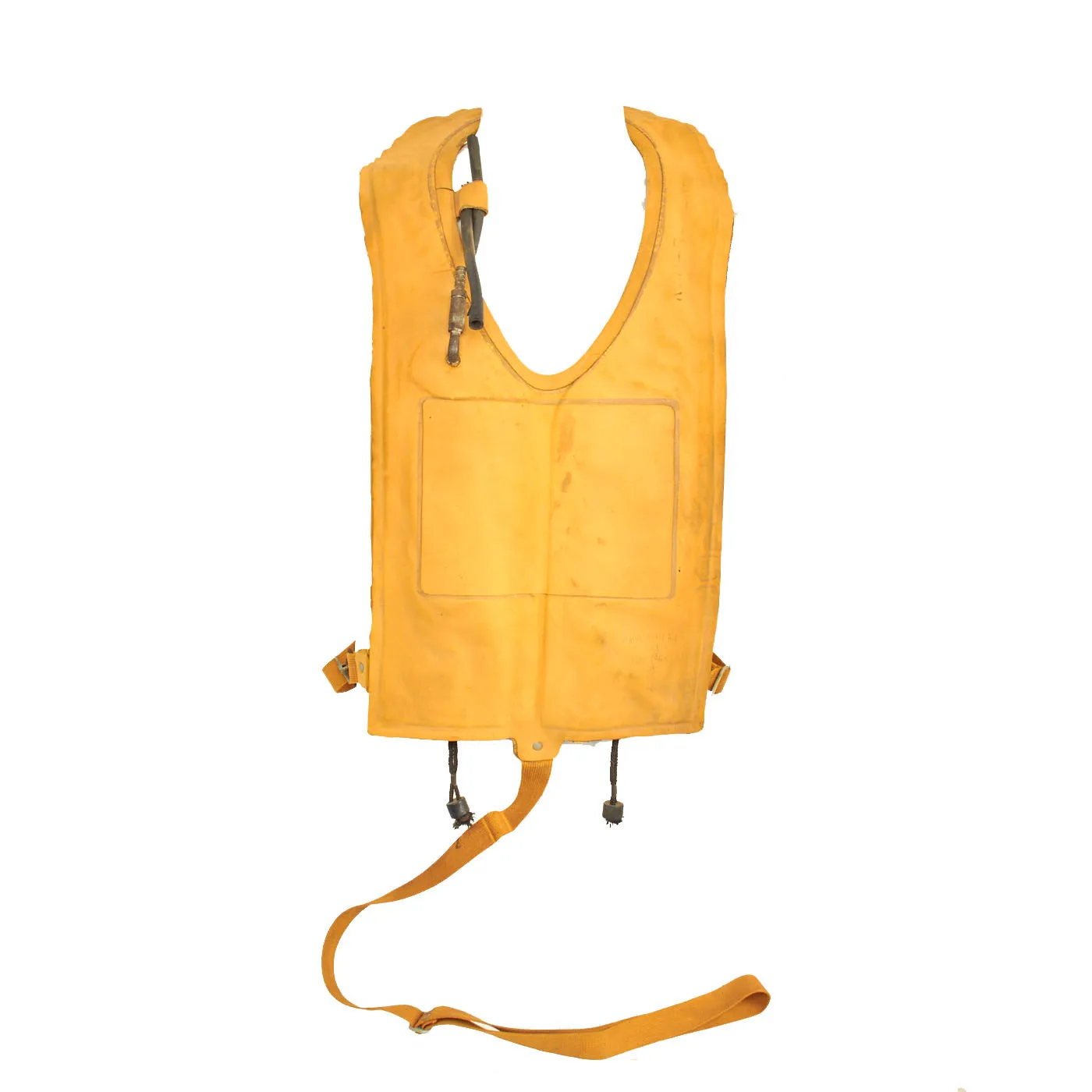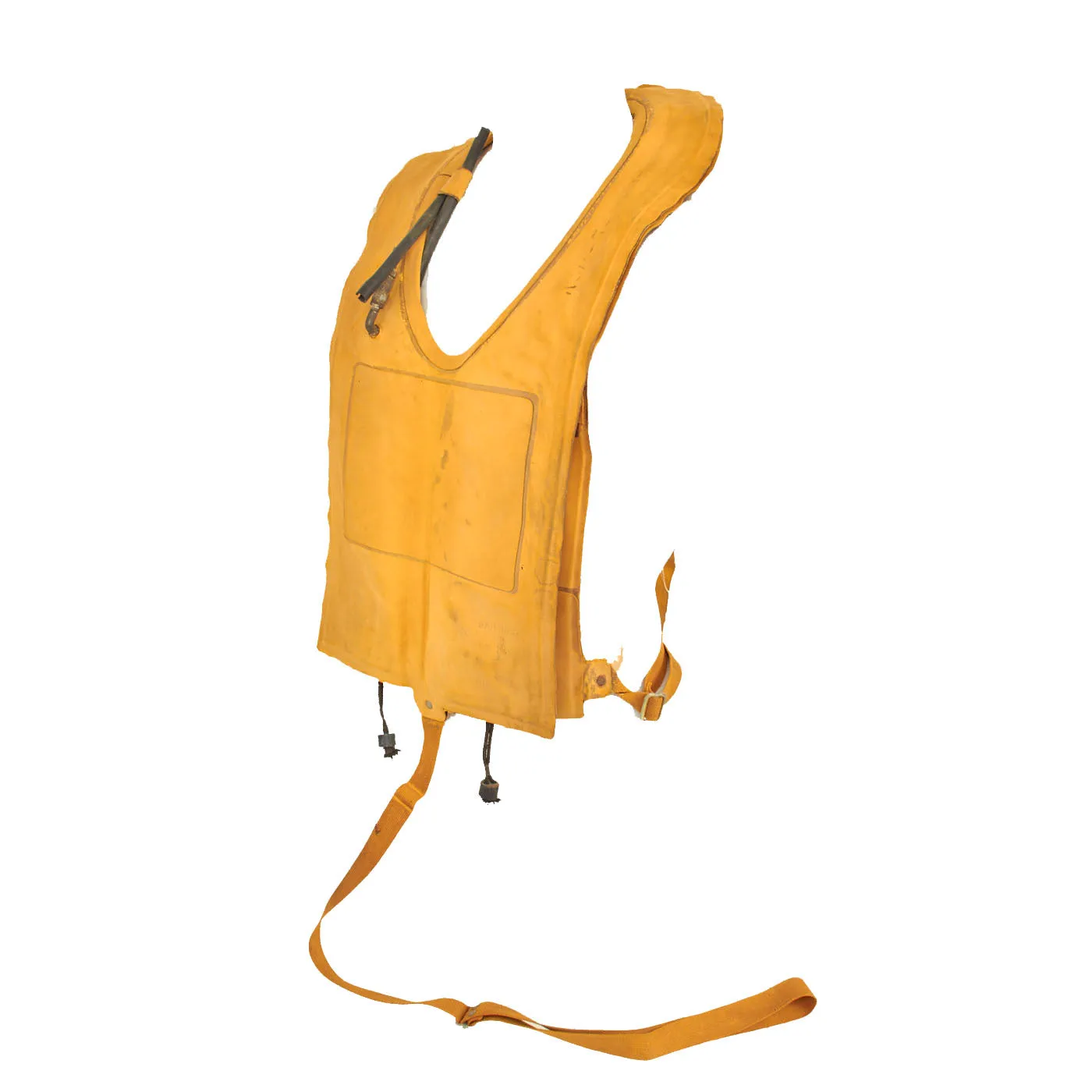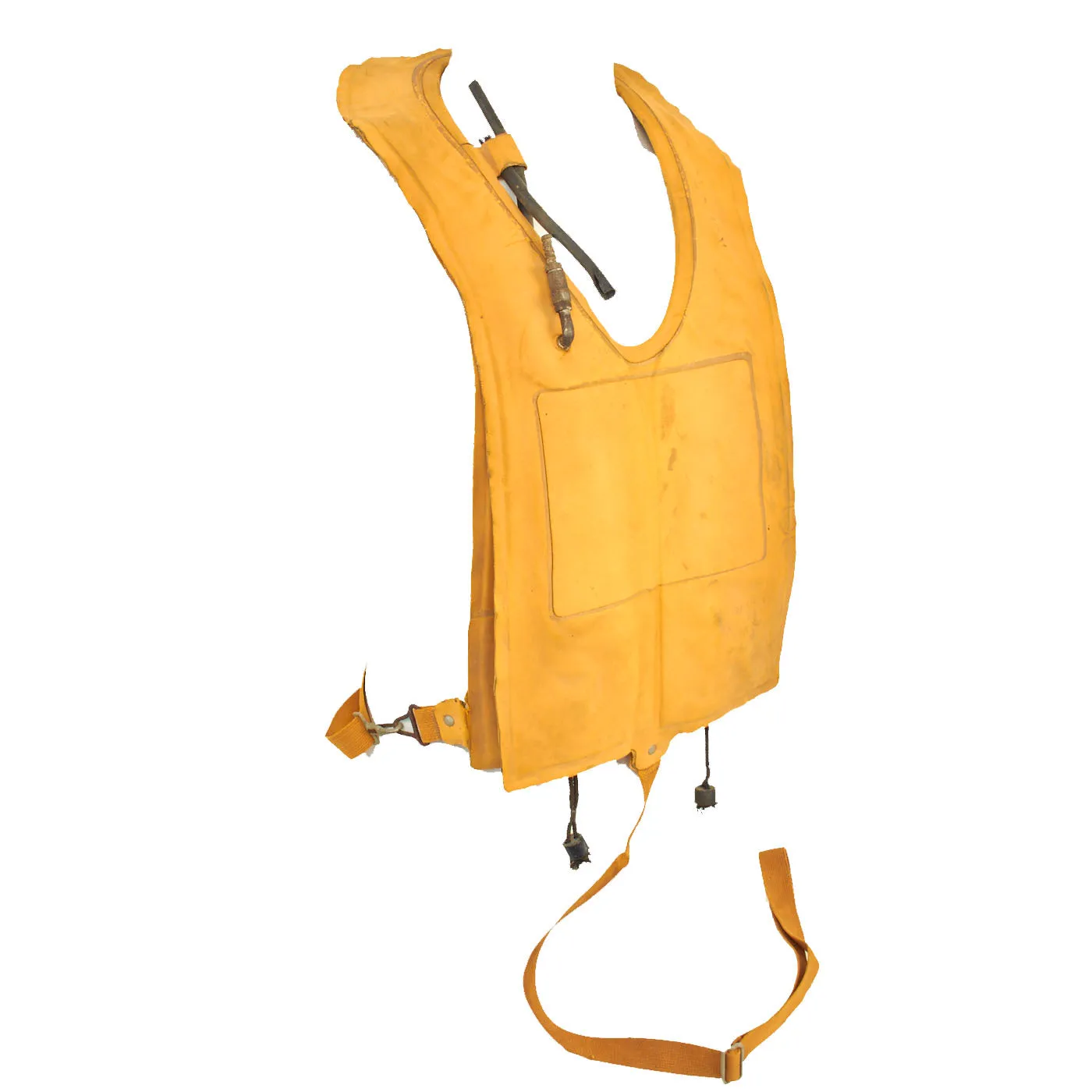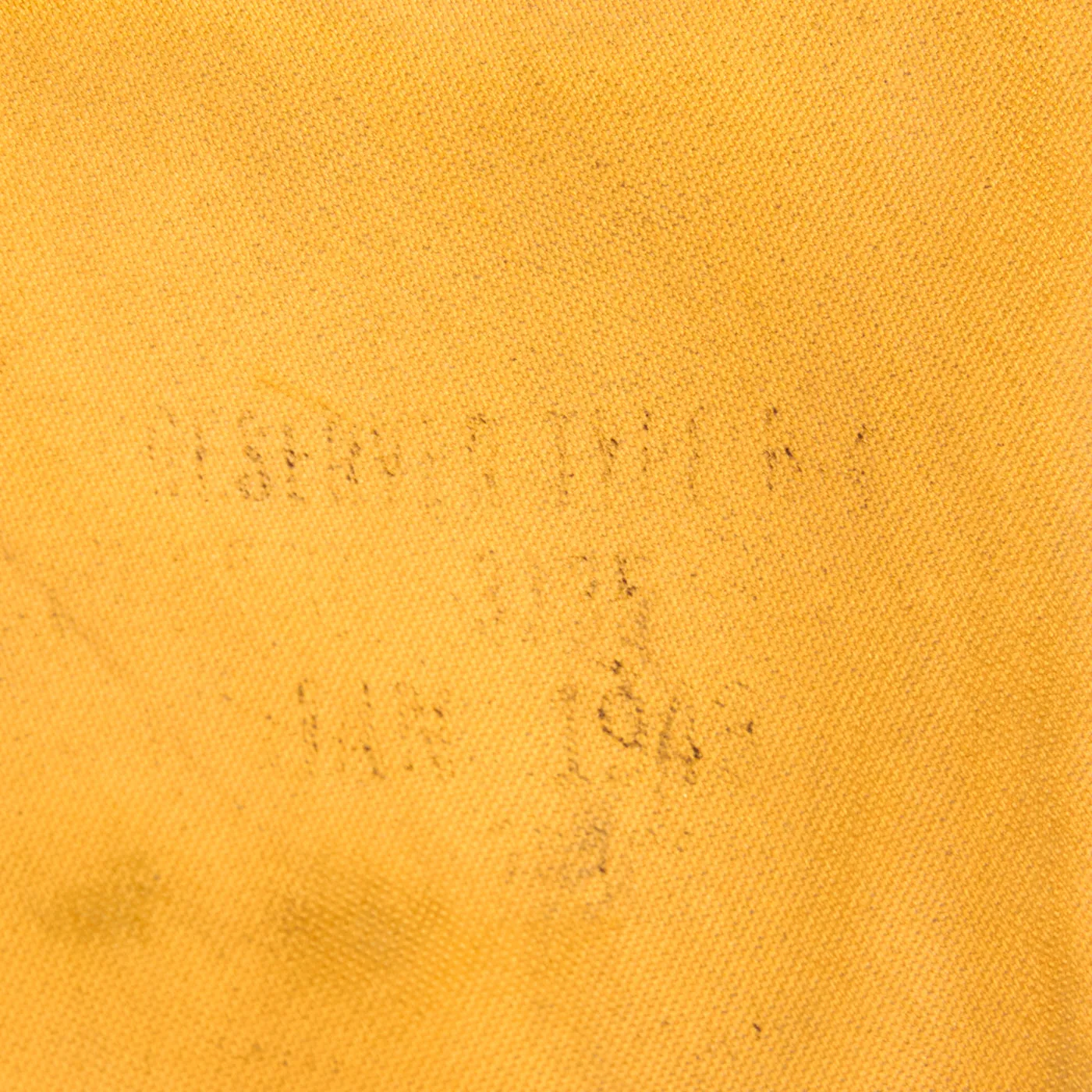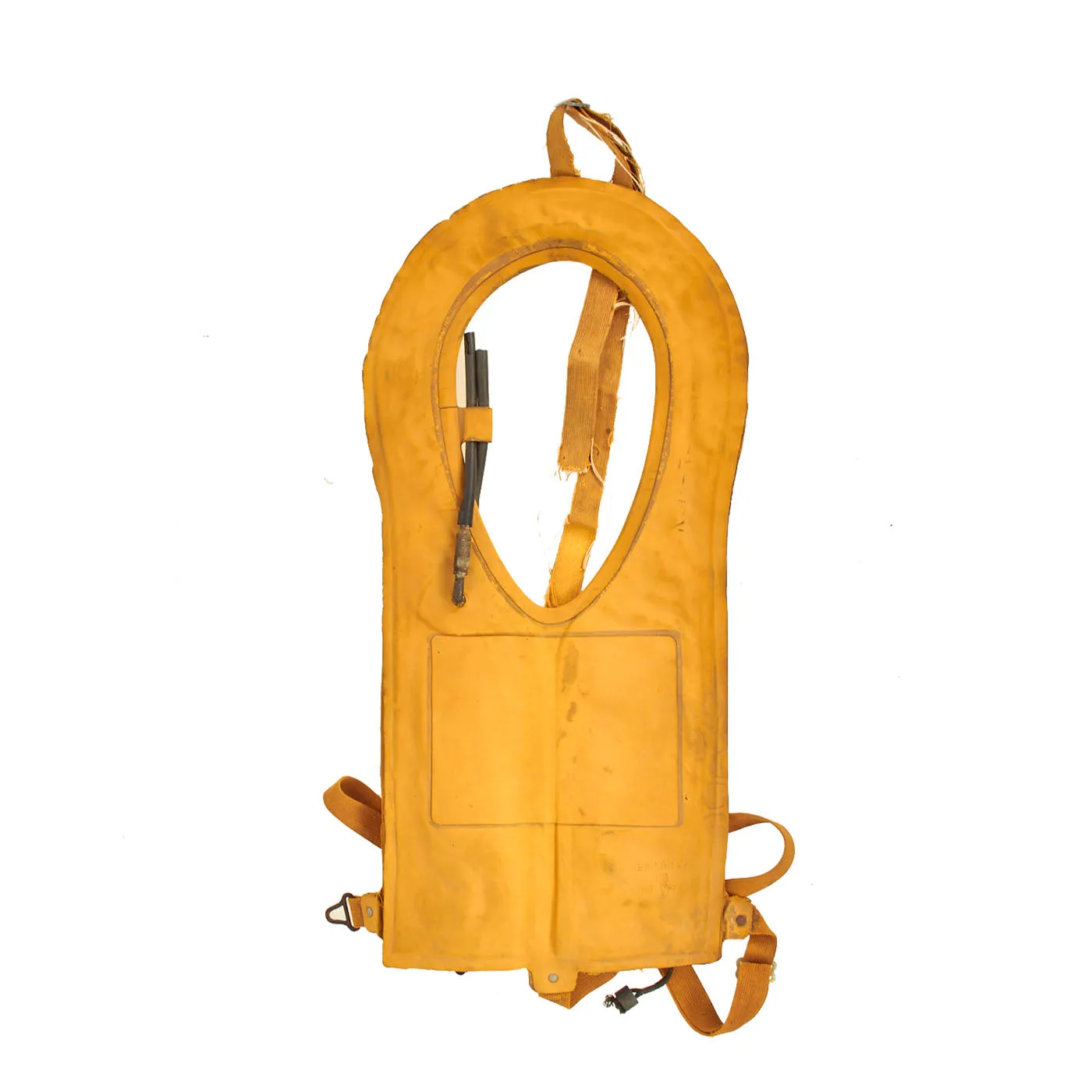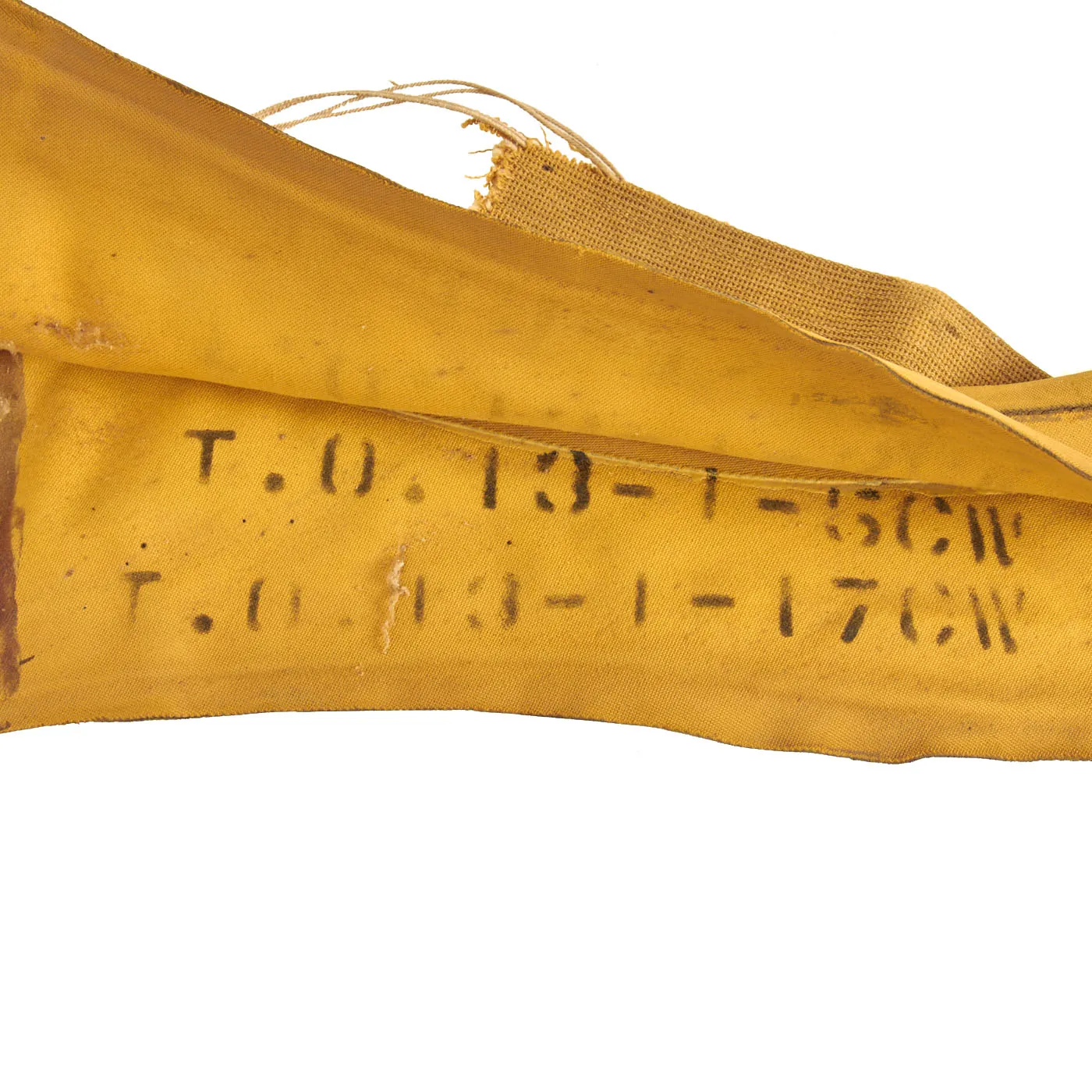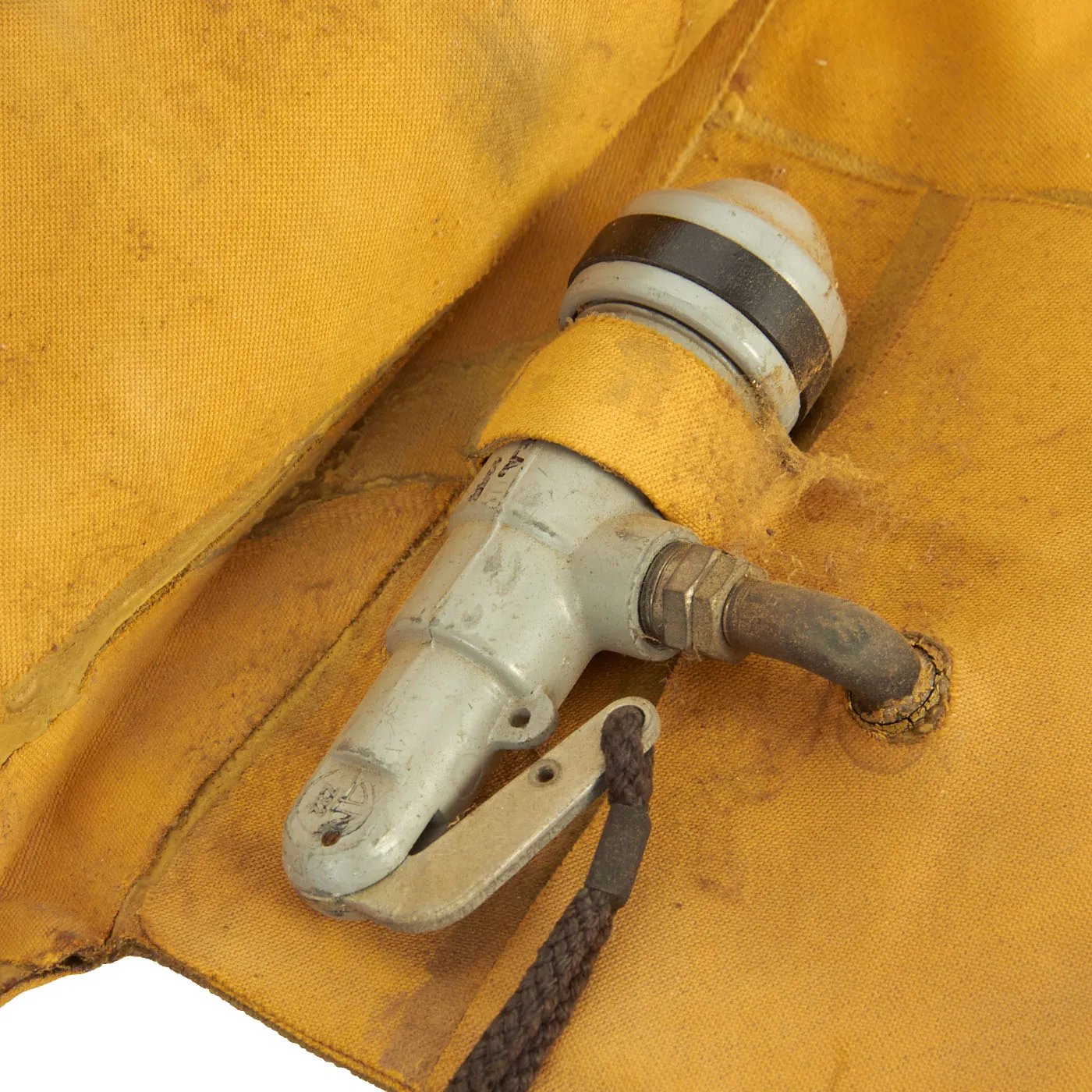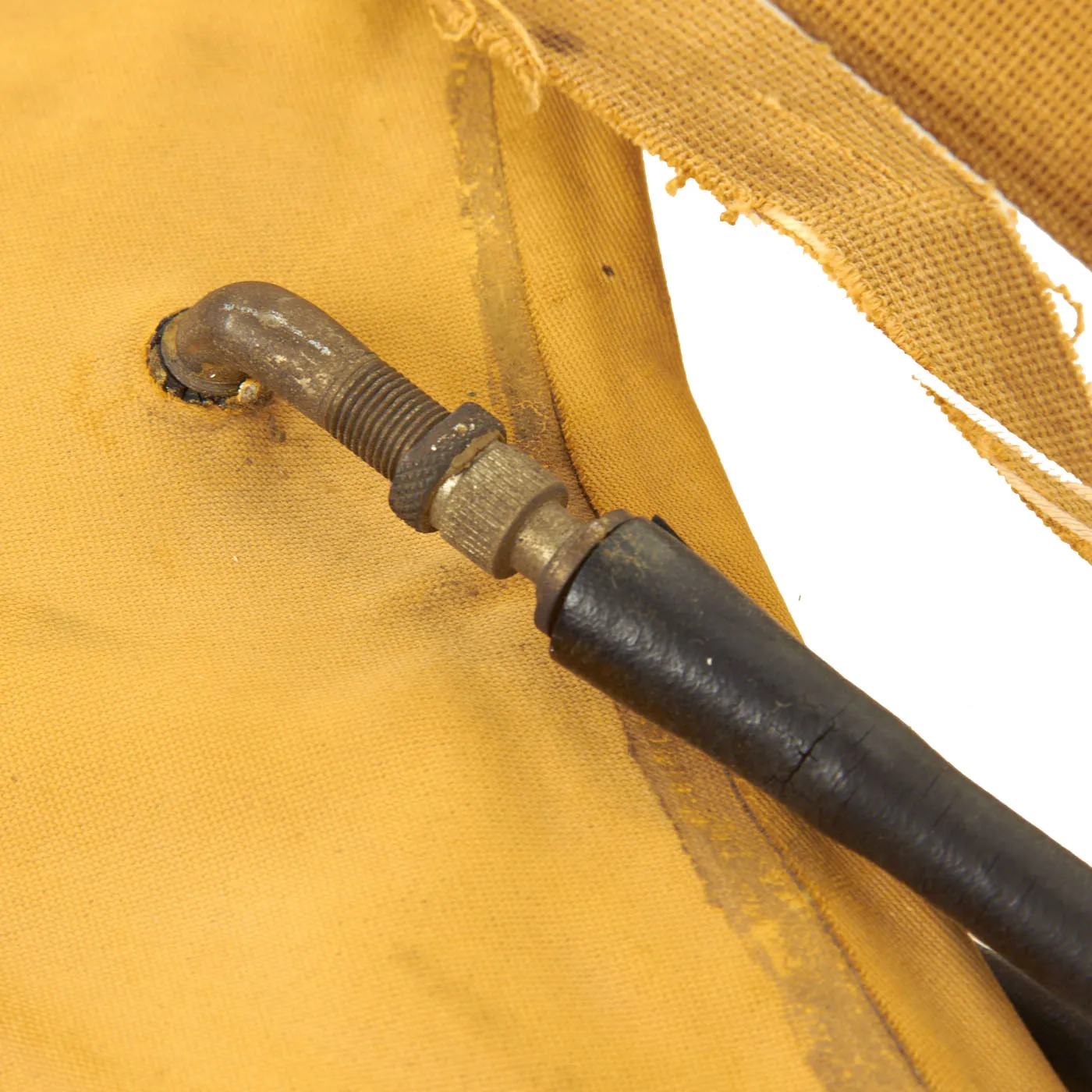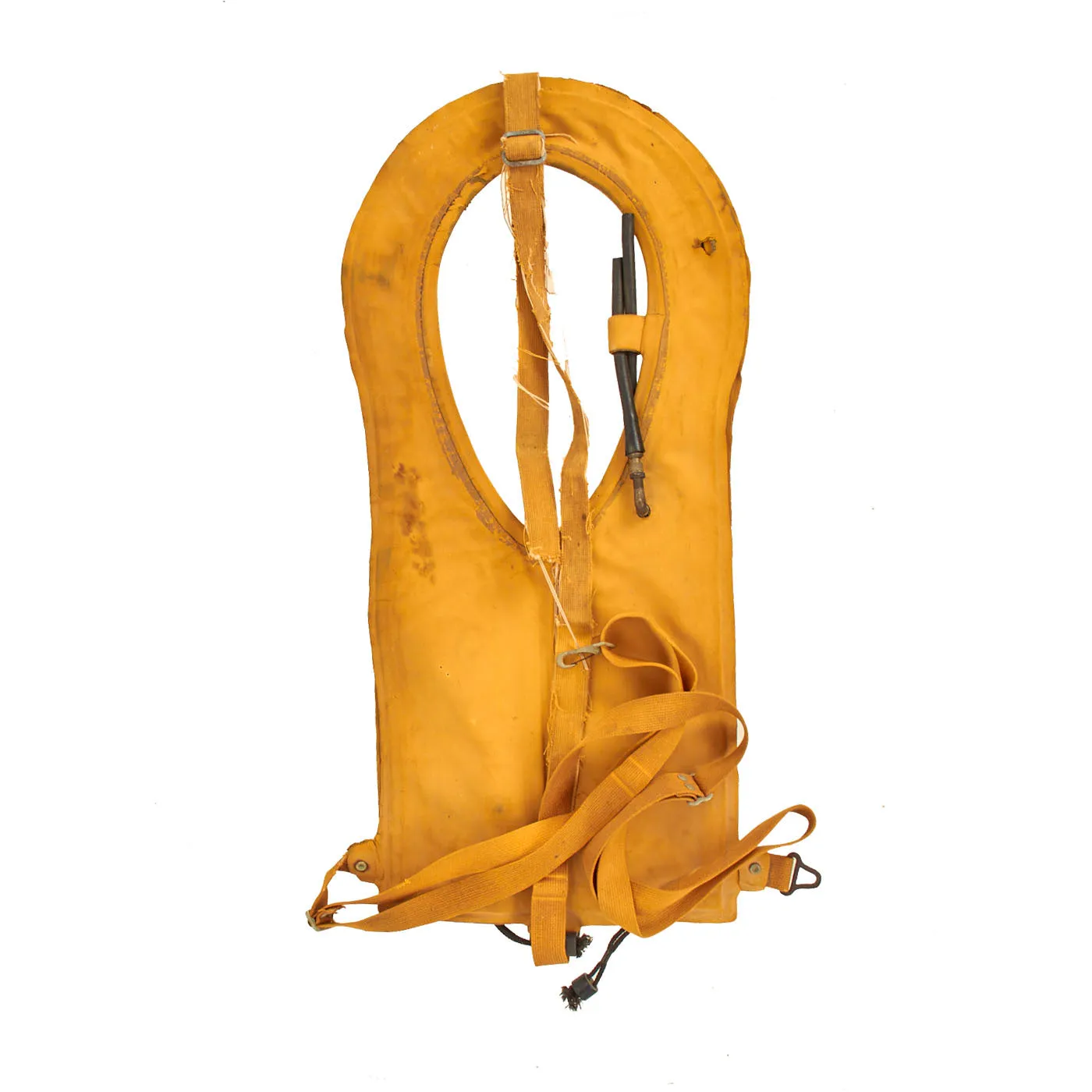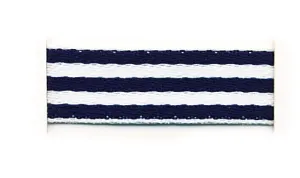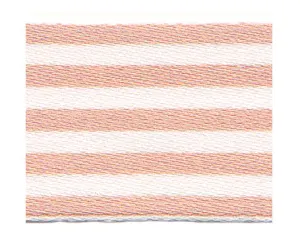Original Item: Only One Available. During World War II the U.S. aviators and the Royal Air Force servicemen had available to them a vital piece of American-made equipment for emergencies that had only been in use for a few years: an inflatable (Mae West) life preserver.
This good example is extremely faded and partially marked PRESERVER, TYPE B-4 / 3135 and we can just barely make out JAN 1943. This is a vest that saw many years of use and the condition reflects that.
This example is in good display condition, and is mostly complete. It is the USAAF version, in a yellow-tan color. It has all of the original tie down straps, and the original C02 inflation valves and retainers are present, with the original pull cords intact. Both manual inflation tubes are still present, as well as the original spring-loaded twist valves. We have not tested for inflation due to sanitary concerns. The manual inflation tubes are present but extremely dry rotted and no longer attached to the connector on the vest itself.
This is a great chance to own an original USAAF "Mae West" Life Vest! Ready to display!
History of the "Mae West" Life Preserver:
The Mae West design is courtesy of a man named Peter Markus (1885-1973). Markus developed his invention in the 1920s and received a patent on it in 1928; in 1930 and 1931 he patented some minor changes to the vest.
Markus came up with the invention when he was living in Minnesota. He was a merchant in the area who loved to boat and fish, and he was attuned to the fact that boaters and fishermen sometimes went overboard and drowned because they refused to wear the life vests in use at that time. The vests were cork-filled and bulky; sportsmen didn’t like to wear them because they hindered arm movement.
Looking for an Answer
Markus started experimenting to find an acceptable alternative. He eventually created a device that was patterned after a man’s vest. The rubberized cloth was made with air pockets; when deflated it weighed under two pounds. It was designed to slip over a person’s head and straps were sewn onto the front panels and could be secured behind.
To inflate the vest, two cords with knots on the ends were connected to small cartridges of fluid carbon dioxide. When the wearer needs to inflate the vest, he or she pulled the cords which triggered the carbon dioxide and caused gas to instantly fill up the vest’s air pockets.
Because the front air pockets filled quite completely, the wearer than had the look of a buxom woman. The World War II men who wore these began to call them the Mae West. (In the 1970s some thought the term should be updated, and they called the vest the Dolly Parton.)
Shortly after perfecting the invention, Peter Markus began marketing the device at sports equipment shows. At one he was attending, a Navy captain saw him demonstrating the life vest and realized the value the preserver could have to the military. Markus was invited to come to Washington to demonstrate the device.
Government Puts Vest to Use
The life vest was accepted quickly and the U.S. government began purchasing them, asking for only one change–that of color. One of the people at the early meetings with Markus noted that a bright yellow-gold color would be more practical if a plane or ship was lost and rescue teams were searching for the crew.
The first demonstration of the value of the vest came shortly after the Navy began purchasing them. A Hawaiian aviator was flying just off the shore of Honolulu when the plane stalled; both the pilot and passenger were forced to jump before the plane crashed. Only the pilot was wearing a life vest; only the pilot was saved. That was a powerful message and the vests soon became regulation equipment for Navy fliers; soon more branches of the service began using them.
The vests soon made headlines. In 1935, the dirigible, the “Macon,” went down in the Pacific, 98 of the craft’s crew of 100 were saved. Those who died had gotten trapped under the wreckage. Shortly thereafter Markus began receiving letters from appreciative airmen.
In Laura Hillenbrand’s recent book, Unbroken, the story of Louis Zamperini, an airman in the Pacific during World War II, the Mae West vest is noted for its value to the aviators.
According to the author, the only times the vests failed the men was when some of them had tampered with the carbon dioxide cartridges, occasionally removing them to carbonate their drinks. Any soldier will say that wars are terrifying—and boring. Clearly, this is one of the things they did during the boring parts, unfortunately.
Still Saving Lives
Before World War II, the life vest was a profit-making venture for the rubber companies to which Markus had licensed the rights to make the vests, and Markus earned royalties on the units sold and did quite nicely with his invention.
During the war, Congress passed an “Excess Profits” tax on earnings from sales to the military during wartime, and in support of the government, Markus cancelled his patent rights for war time and the future. From that date forward, the vests were available to the government royalty-free. According to the inventor’s son, Alvin A. Markus, his father “was happy his ingenuity contributed to saving lives.”
Today the military still uses a form of this life vest, and the basic model provided for all commercial airline travelers is based on this “Mae West” model.




